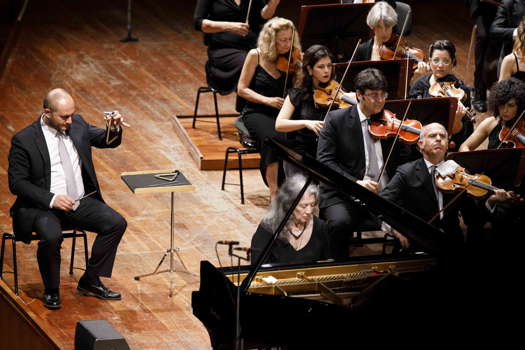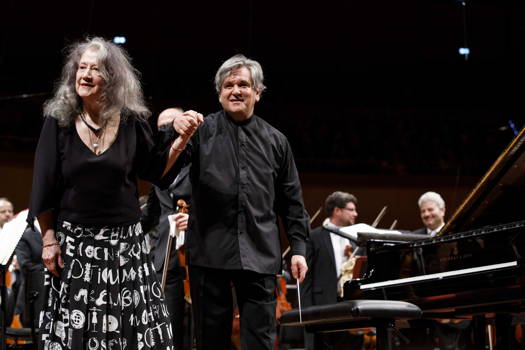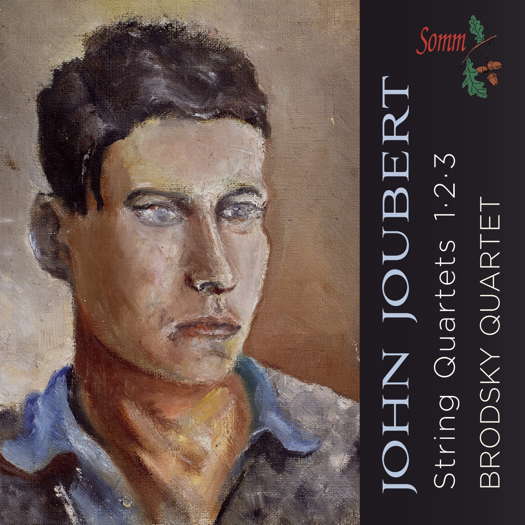PROVOCATIVE THOUGHTS: 
The late Patric Standford may have written these short pieces deliberately to provoke our feedback. If so, his success is reflected in the rich range of readers' comments appearing at the foot of most of the pages.
A Winning Team
GIUSEPPE PENNISI listens to a pre-tour concert
by Martha Argerich and Antonio Pappano,
with the Symphony Orchestra of the
Accademia Nazionale di Santa Cecilia
From 4 until 10 November 2019, the Symphony Orchestra of the National Academy of Santa Cecilia is on tour. The program includes concerts at the Paris Philharmonie, at the Grosser Saal of the Kultur-Casino in Bern, at Victoria Hall in Geneva, at Tonhalle Maag in Zurich, at the KKL in Lucerne and at the LAC in Lugano. This is the first of four Academy Symphony tours scheduled this season: the others will be 10-16 December 2019 in various Italian cities, 20-28 January 2020 in Germany and at the end of April 2020 in Athens. As usual, the concerts taken on tour form part of the season's program and, before departure, they are performed in the Santa Cecilia Hall of the Parco della Musica in Rome, on the usual three subscription evenings.
The first tour is centered on an exceptional couple: Antonio Pappano at the helm of the orchestra and Martha Argerich as soloist. Martha Argerich, Argentinian but naturalized Swiss, born in 1941, and with more than sixty years of concert activities, has been an international star for decades. With Pappano, musical director of both the National Santa Cecilia Academy in Rome as well as of the Royal Opera House in London, she is a winning team. On tour in two of the six concerts, the piano soloist will be Francesco Piemontesi. I listened to the concert on 1 November 2019 in a 3,000-seat hall crowded in every tier. The concert was broadcast live on RAI 3 and recorded to be telecast via the national television channel RAI 5.
The program was strictly Romantic, as Roman audiences like it. The introduction was the overture of Carl Maria von Weber's opera Euryanthe. Thereafter, there was the real workhorse of Martha Argerich performing, for the first time in Rome, although the pianist is a frequent guest of the concerts of the Academy, the Concerto No 1 in E flat major for piano and orchestra by Franz Liszt. After the interval, the orchestra played Robert Schumann's Symphony No 2 in C major, Op 61. A curiosity in the first performance of the Liszt concerto - Weimar 1855 - the author was on piano and the orchestra was conducted by Hector Berlioz. At the first performance of Schumann's second symphony - Leipzig, 1846 - at the Gewandhaus, Felix Mendelssohn-Bartholdy was conducting.
Pappano directed the Euryanthe overture vigorously, marking the first section with a lot of fire in order to emphasize the difference with the other two - Largo and Assai moderato - and to show its atmosphere and romantic colours.
The most anticipated piece, however, was Franz Liszt's Piano Concerto No 1. The writing is aimed at achieving the dual goal of enhancing the qualities of the piano and integrating it into the orchestra when not performing as a soloist; the cadenzas, all very short, are clearly written in the score and leave little freedom of interpretation, but require extreme virtuosity in the dialogue between soloist and orchestra.
In the Allegro maestoso with which the piece begins, the strings open peremptorily, exposing the motto complemented by wind chords. The piano enters with lightning accelerations, pounding octaves and arpeggios. A second theme, melodious and nostalgic, also involves the clarinet and two violins. The orchestra leaves ample space for the daring evolutions of the soloist. An evanescent pianissimo closes the movement.
In the second movement, the atmosphere is lyrical, dreamy, almost like a fairy tale; the introductory phrase is entrusted to the strings. Then the movement is taken up and developed by the piano in a wide melody.
The third movement initiates a jolly theme punctuated by the mocking interventions of the triangle and the trills of the instruments. After a brief reference to the previous melody, the initial motto is taken up by the piano in the bass register and reproduced in the orchestra for a magnificent dilation.

Martha Argerich with members of the Orchestra of the National Academy of Santa Cecilia playing Liszt's Piano Concerto No 1. Photo © 2019 Musacchio & Ianniello
The fourth movement is a lively, light march, made festive by the presence of the trills, then interrupted by the initial motto. It resumes the brilliant dance and frantic running on the keyboard; appropriately varied, the previous themes are presented again before the music reaches its energetic conclusion.
The dialogue between Martha Argerich, who showed virtuosity and energy on the keyboard, and the orchestra conducted by Antonio Pappano, was perfect. After twenty intense minutes, the audience exploded into ovations and encore requests. To which Argerich responded with a sweet and delicate Liszt Nocturne.

Martha Argerich with Antonio Pappano and members of the Orchestra of the National Academy of Santa Cecilia. Photo © 2019 Musacchio & Ianniello
Schumann's Second Symphony is well known and often performed in the Academy's concert programs. It is worth noting how Pappano emphasized the different colours between the Adagio espressivo and the Allegro molto vivace.
A great success.
Copyright © 4 November 2019
Giuseppe Pennisi,
Rome, Italy




